博文
镁合金腐蚀研究进展(40)—环丙沙星负载聚合物多层膜诱导羟基磷灰石涂层
|||
镁合金腐蚀研究进展(40)—环丙沙星负载聚合物多层膜诱导羟基磷灰石涂层
镁(Mg)合金具有独特的生物学特性,如细胞相容性,生物降解性和与天然骨相似的弹性模量,可应用于骨组织工程、整形外科以及血管支架中。然而,极快的降解速率和易受细菌感染限制了镁合金的医学应用。
羟基磷灰石(Ca10(PO4)6(OH)2, HAp)是人体骨骼组织的主要无机成分,已被广泛用于镁合金的表面改性,其既有利于基体与周围骨组织的结合,也可以阻止镁离子的释放。然而,HAp表面细菌的增殖可导致严重的生物膜相关感染。因此,在形成生物膜之前杀死细菌是防止细菌定植的关键步骤。为此,可以制备负载抗生素的抗菌HAp涂层以根除植入物表面上的感染。不幸的是,HAp涂层的多孔结构将在最初的24小时内导致抗生素的100%爆发释放,因此,包括Mg合金在内的涂覆基体不能长期抑制细菌活性。另一方面,应改善涂层的致密性,以赋予载药镁合金更好的抗腐蚀性和延长的抗菌能力。
盐酸环丙沙星(CIP)是一种抗革兰氏阳性菌和革兰氏阴性菌的广谱氟喹诺酮类抗生素。重要的是,与其他抗生素相比,细菌对环丙沙星不易产生耐药性。同时,CIP去质子化形成的羧基(-COO-)和Ca2+离子之间的分子识别作用将有助于形成致密的HAp涂层。在此,CIP与聚丙烯胺盐酸盐(PAH)通过静电力驱动的层层(LbL)组装方法在镁合金表面上制备了载药多层膜,然后通过水热处理制备HAp涂层。
得到的载药(CIP/PAH)10/CIP-HAp涂层显示出致密的薄片形貌和高结晶磷灰石结构。这可能是由于CIP的羧酸根和Ca2+离子之间的相互作用。该涂层具有较大的厚度和致密的结构,可以有效提高镁合金的耐蚀性。此外,这种装载CIP的涂层不仅对金黄色葡萄球菌和大肠杆菌有显著的抗菌特性,而且可以延长抗生素的释放时间(25天)。同时,MTT和活/死染色测试显示,所得涂层对MC3T3-E1成骨细胞具有可接受的生物相容性。因此,(CIP/PAH)10/CIP-HAp涂层具有良好的耐腐蚀性,可控的CIP释放,优异的抗菌活性和可接受的细胞相容性,有可能作为用于整形外科应用中的生物可降解植入物镁合金表面改性的有效涂层。
该项工作"Corrosion resistance and antibacterial activity of hydroxyapatite coating induced by ciprofloxacin-loaded polymeric multilayers on magnesium alloy"发表在《Progress in Organic Coating》(135, 2019, 465-474)(Share Link:https://authors.elsevier.com/c/1ZJui14RJzNY6P)。第一作者为硕士研究生纪晓静。
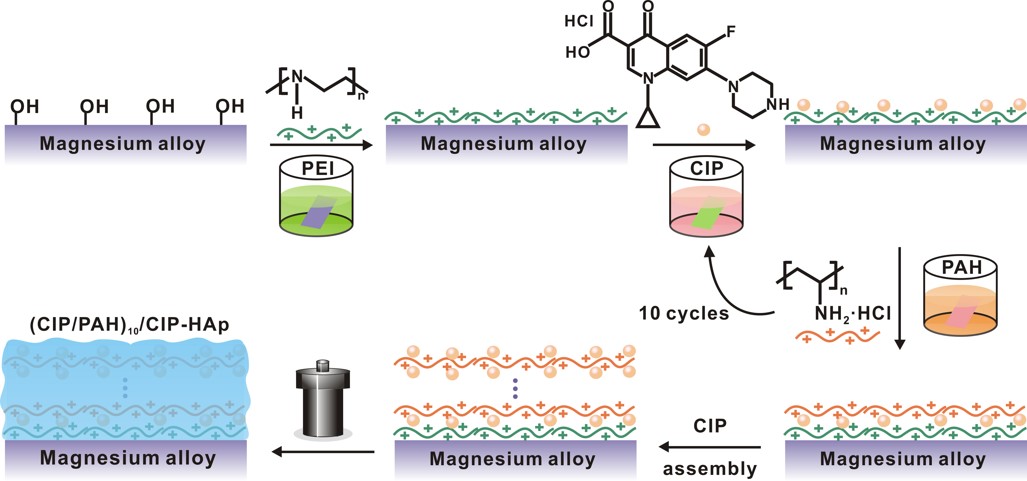
Fig. 1. Schematic representation of the preparation of (CIP/PAH)10/CIP-HAp/Mg.

Fig. 2. SEM images (a, b) and corresponding EDS spectra (c, d) of the pure HAp (a, c) and (CIP/PAH)10/CIP-HAp (b, d) coatings.
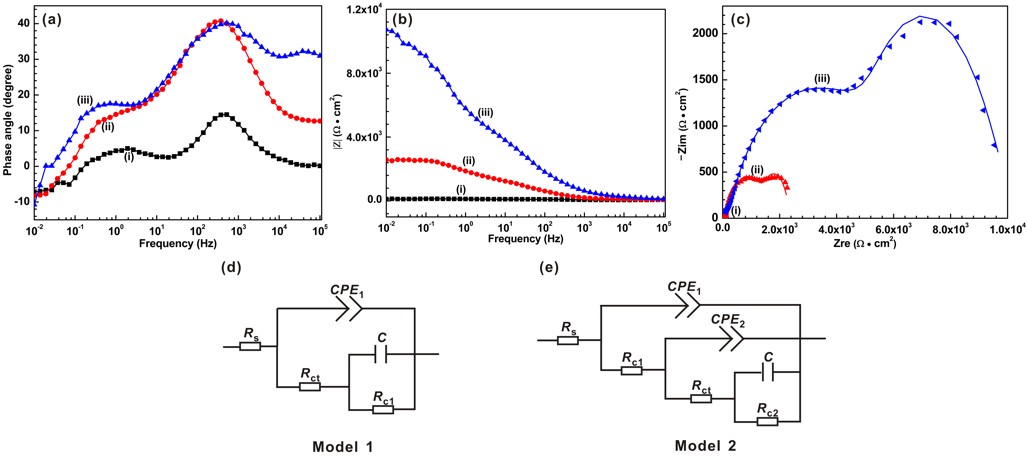
Fig. 3. Bode phase angle plots (a), Bode magnitude plots (b) and Nyquist plots and fitting curves (c) of (i) AZ31 substrate, (ii) HAp/Mg, (iii) (CIP/PAH)10/CIP-HAp/Mg; electrical equivalent circuit models (d, e) of all samples.

Fig. 4. HEV curves (a), HER results (b), pH values (c) in SBF solution for 326 h and digital camera photographs (d) after a 326-h immersion of the (i) AZ31 substrate, (ii) HAp/Mg and (iii) (CIP/PAH)10/CIP-HAp/Mg.
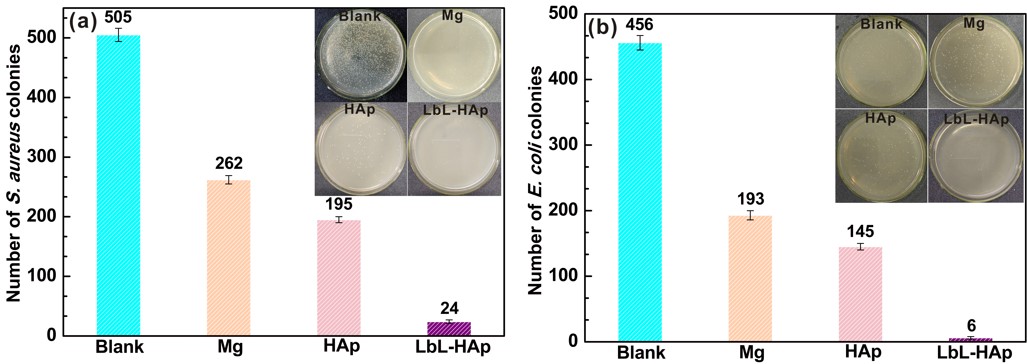
Fig. 5. Representative images and CFU numbers of viable bacteria growth of S. aureus (a) and E. coli (b) colonies on different samples: the blank, Mg alloy, HAp/Mg and (CIP/PAH)10/CIP-HAp/Mg after culturing for 16 h.
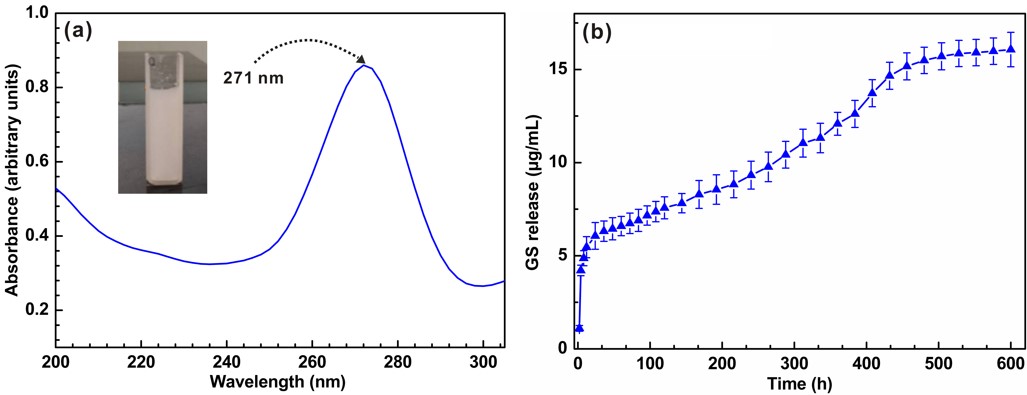
Fig. 6. UV–vis absorption spectra for CIP (a) and the cumulative release concentration from the (CIP/PAH)10/CIP-HAp coating in PBS for 600 h (b).
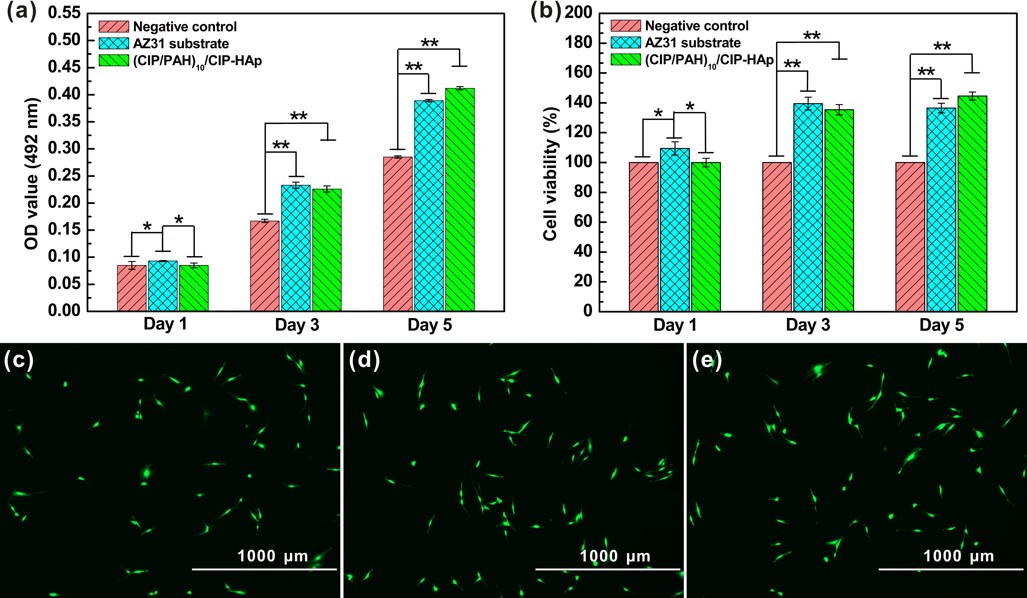
Fig. 7. OD values (a) and Cell viability (b) of MC3T3-E1 cultured in different extracts prepared with negative control, AZ31 substrate and (CIP/PAH)10/CIP-HAp/Mg for 1, 3 and 5 days. Statistically significant differences (*P < 0.05, **P < 0.01); Fluorescent images (c–e) of MC3T3-E1 after culturing for 24 h in extracts of the (c) negative control, (d) AZ31 substrate and (e) (CIP/PAH)10/CIP-HAp/Mg.
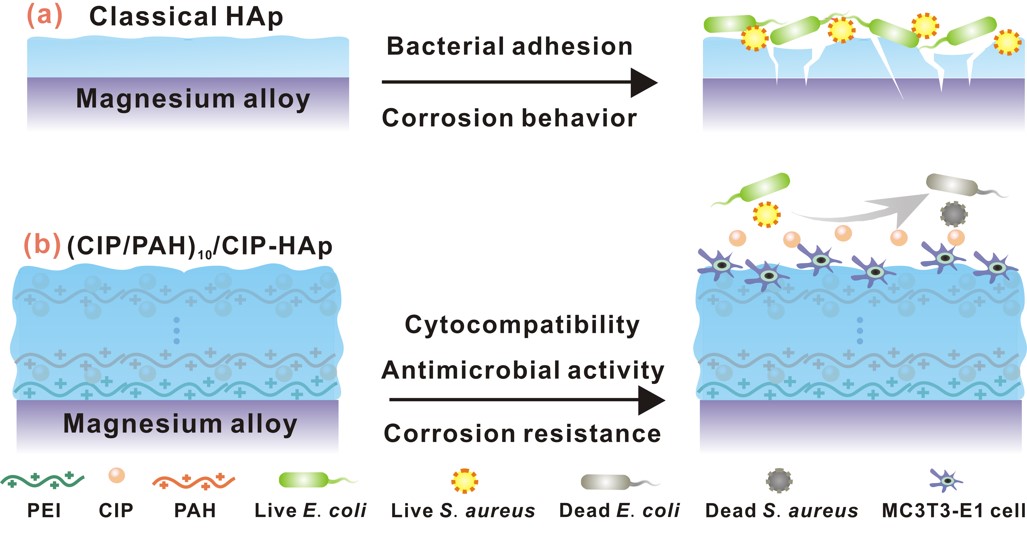
Fig. 8. Schematic illustrations of the anti-corrosion mechanism, antibacterial ability and cytocompatibility of the classical HAp (a) and (CIP/PAH)10/CIP-HAp (b) coatings.
链接:
镁合金腐蚀研究进展(39)—镁合金表面载锌蒙脱石涂层耐蚀抗菌性能
https://wap.sciencenet.cn/blog-114283-1187916.html
上一篇:[转载]【优秀研究生党员专访】崔蓝月——让青春在科研路上闪光
下一篇:镁合金腐蚀研究进展(41)—碳球掺杂对微弧氧化膜耐蚀耐磨性能的影响
全部作者的精选博文
全部作者的其他最新博文
- • 五律 谷雨
- • 回忆录(1)-我的教授梦
- • 五律 紫荆
- • 1995-2023年优秀论文目录
- • 七绝 海棠
- • 踏莎行(晏殊体) 锗(Germanium)